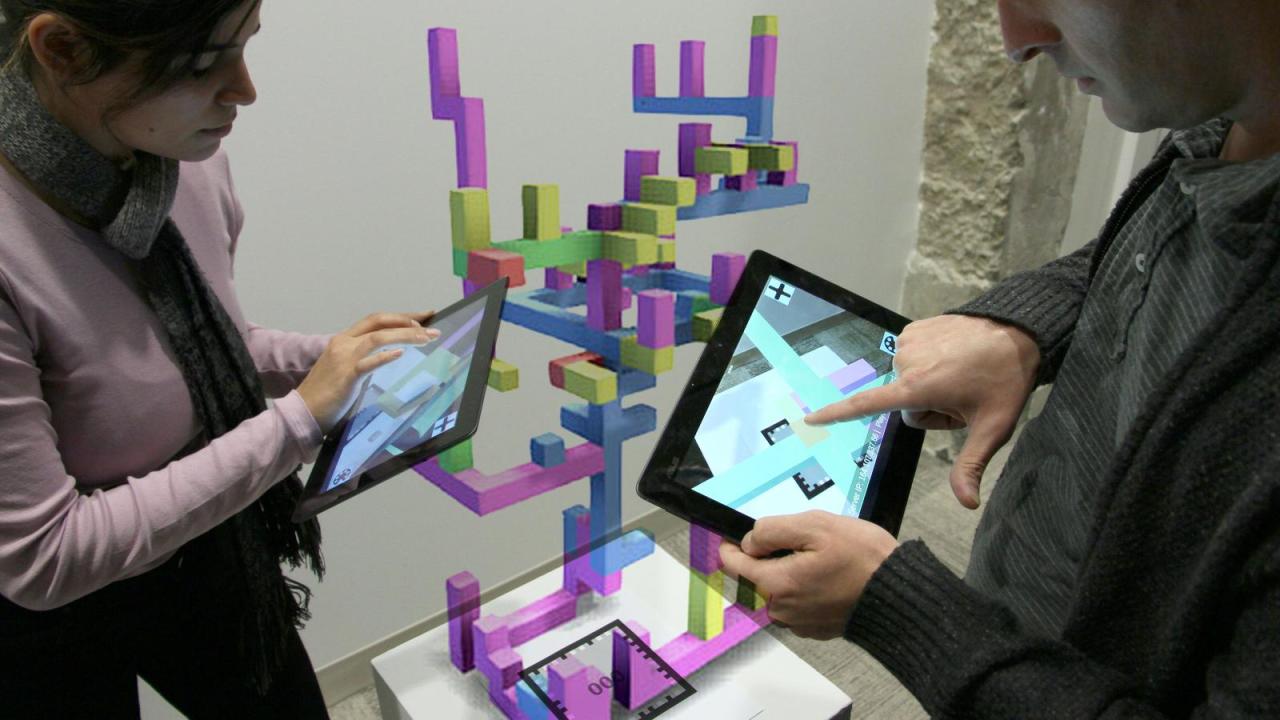Interactive media experiences are revolutionizing how we consume information, engage with stories, and connect with brands, moving beyond passive consumption to dynamic participation. This field is a powerful fusion of technology, creativity, and user agency, constantly pushing boundaries to create immersive, personalized, and memorable encounters. This comprehensive article delves into the profound shifts and innovations defining the future of interactive media, exploring the forces driving its evolution, highlighting groundbreaking concepts, and forecasting upcoming trajectories. Understanding these innovations isn’t just about appreciating digital flash; it’s about discerning the critical elements that lead to widespread adoption, deep engagement. From immersive narratives and gamified learning to responsive art and personalized advertising, the impact of forward-thinking interactive media is ubiquitous and transformative, redefining how we learn, play, and connect.
Driving Forces Behind Interactive Media’s Evolution

Several powerful currents are converging to redefine the purpose and practice of interactive media, pushing it toward increasingly immersive, intelligent, and user-driven forms.
A. Technological Advancements:
* High-Speed Connectivity (5G, Fiber Optics): Low-latency, high-bandwidth networks are crucial for seamless streaming of complex interactive content, real-time multi-user experiences, and rapid data exchange in immersive environments.
* Advanced Processing Power: More powerful CPUs and GPUs enable more realistic graphics, complex physics simulations, and sophisticated real-time rendering within interactive experiences, enhancing visual fidelity and immersion.
* Artificial Intelligence (AI) & Machine Learning (ML): AI is revolutionizing interactive media through:
* Personalization Engines: AI algorithms analyze user behavior to deliver highly customized content, recommendations, and adaptive narratives.
* Generative AI: AI tools (e.g., for text, image, video, 3D asset generation) accelerate content creation and enable dynamic, evolving interactive experiences.
* Natural Language Understanding (NLU): For conversational AI, intelligent chatbots, and voice-activated interfaces, enabling more natural interaction.
* Behavioral Analysis: AI understanding user emotional states or intent to adapt the interactive experience dynamically.
* Augmented Reality (AR) & Virtual Reality (VR) Hardware: More accessible and powerful headsets, haptic feedback devices, and advanced tracking systems create truly immersive platforms for interactive content.
* Sensor Technologies: Ubiquitous sensors (motion, gaze, biometric) allow interactive media to respond to user input in increasingly subtle and sophisticated ways.
B. Shifting Consumer Behavior and Expectations:
* Demand for Personalization: Users expect content and experiences tailored to their individual preferences, interests, and past interactions, moving beyond one-size-fits-all approaches.
* Desire for Agency and Control: Consumers want to be active participants, not passive recipients, influencing narratives, customizing content, and creating their own experiences.
* Social Connectivity: The desire to connect with others within shared digital spaces drives the development of multi-user interactive experiences and collaborative platforms.
* “Gamification” of Everything: Applying game design elements and principles (e.g., points, badges, progress tracking, challenges) to non-game contexts to increase engagement and motivation.
* Attention Economy: In a saturated content landscape, interactive media offers a powerful way to capture and retain user attention through dynamic engagement.
C. Creative Innovation and Interdisciplinary Collaboration:
* Blending Disciplines: Interactive media thrives at the intersection of traditional storytelling, game design, UX/UI design, software engineering, cognitive psychology, and data science.
* Narrative Experimentation: Storytellers are experimenting with non-linear narratives, branching storylines, and user-driven plots that adapt in real-time based on choices.
* Artistic Expression: Artists are using interactive mediums to create new forms of digital art that respond to viewer input, environmental data, or evolve over time.
* Experiential Marketing: Brands are leveraging interactive media to create memorable and engaging experiences that build deeper connections with consumers.
D. Economic and Market Opportunities:
* Monetization Models: New business models emerging, including in-app purchases, subscriptions for interactive content, NFTs for digital assets, and interactive advertising.
* E-commerce Transformation: Interactive product configurators, virtual try-ons, and immersive shopping experiences are enhancing online retail.
* Training and Education: Interactive simulations, gamified learning platforms, and virtual field trips are proving highly effective for skill development and knowledge acquisition.
* Corporate Communication: Businesses use interactive media for engaging presentations, training modules, and internal communication platforms.
Transformative Interactive Media Concepts
The following concepts represent the cutting edge of interactive media, moving beyond simple user input to offer deeply engaging, personalized, and often boundary-pushing experiences.
A. Immersive Storytelling (Branching Narratives & XR Narratives):
* Non-Linear Storytelling: Narratives where the plot, character development, or outcome changes based on user choices or interactions, offering multiple pathways and replayability.
* Interactive Film and TV: Viewers making real-time decisions that influence the story progression, bridging the gap between passive viewing and active participation (e.g., Netflix’s Bandersnatch).
* VR/AR Narratives: Storytelling specifically designed for immersive environments, where users physically inhabit the story world, interacting with characters and objects in 3D space, leading to heightened empathy and presence.
* Generative Narratives: AI algorithms creating dynamic storylines, character dialogues, or environmental elements that evolve in real-time based on user interaction, leading to endlessly unique experiences.
B. Gamified Experiences and Serious Games:
* Beyond Entertainment: Applying game design principles (e.g., points, levels, badges, challenges, leaderboards) to non-game contexts like education, health, training, and marketing to increase engagement and motivate desired behaviors.
* Learning Games (Edutainment): Interactive games designed to teach specific subjects or skills, making learning more enjoyable and effective.
* Health & Wellness Gamification: Apps and devices that incentivize healthy habits (e.g., fitness trackers with reward systems, meditation apps with progress tracking).
* Employee Training Simulations: Interactive simulations that allow employees to practice complex tasks or decision-making in a safe, repeatable virtual environment, improving skill retention and reducing risk.
C. Personalized and Adaptive Content:
* AI-Driven Personalization: AI algorithms analyzing user data (preferences, past behavior, demographics) to dynamically deliver customized content, recommendations, news feeds, and advertising in real-time.
* Responsive Content: Media that adapts its presentation, level of detail, or complexity based on user context (e.g., device, location, time of day, emotional state inferred by AI).
* Generative Content on Demand: AI creating unique images, articles, music, or video segments tailored to individual user requests or preferences, enhancing relevance.
* User-Generated Customization: Platforms allowing users to extensively customize their experience, from interface themes to character appearances and virtual environments.
D. Interactive Data Visualization and Infographics:
* Explorable Data: Transforming static charts and graphs into interactive experiences where users can filter, drill down, highlight, and explore datasets at their own pace, revealing insights.
* Storytelling with Data: Using interactive elements to guide users through complex data narratives, making abstract information more understandable and engaging.
* Immersive Data: Presenting data in 3D environments (VR) or overlaid onto physical objects (AR) for more intuitive and contextual understanding, particularly valuable in enterprise or scientific fields.
* Real-time Data Feeds: Interactive dashboards and visualizations that update in real-time with live data streams (e.g., traffic, financial markets, environmental sensors).
E. Responsive Art and Dynamic Installations:
* Audience as Co-Creator: Artworks that respond to viewer presence, movement, sound, or even biometric data, creating unique and unrepeatable experiences where the audience is an active participant.
* Generative Art: Algorithms creating continuously evolving visual or auditory artworks that change over time, often influenced by external data or internal parameters.
* Projection Mapping: Large-scale digital projections onto buildings, natural landscapes, or intricate objects, transforming their appearance and creating dynamic, often narrative, visual installations.
* Interactive Sculptures: Physical sculptures or installations that respond to user interaction through light, sound, or movement.
Impact Across Diverse Industries

These innovations in interactive media are fundamentally transforming how various industries operate and how individuals engage with content, products, and services.
A. Education and Learning:
* Personalized Learning Paths: Adaptive educational platforms that adjust content difficulty and delivery based on student performance and learning style.
* Virtual Labs and Simulations: Students conducting experiments, dissecting organisms, or practicing complex procedures in risk-free virtual environments.
* Gamified Curriculum: Incorporating game elements into lessons to increase student motivation, engagement, and knowledge retention.
* Virtual Field Trips: Immersive experiences that transport students to historical sites, distant ecosystems, or even inside the human body.
B. Marketing and Advertising:
* Experiential Marketing: Creating immersive brand experiences (e.g., pop-up AR activations, VR brand worlds) that build deeper emotional connections with consumers.
* Personalized Advertising: Delivering highly targeted and dynamic ad content that adapts to individual user preferences and context.
* Interactive Product Catalogs: 3D product configurators, virtual try-ons, and AR product visualization that enhance online shopping and reduce purchase uncertainty.
* Gamified Loyalty Programs: Rewarding customer engagement through interactive challenges, points, and badges.
C. Entertainment and Media:
* Interactive Storytelling: The rise of choose-your-own-adventure films, branching TV series, and highly responsive video games that put the audience in control of the narrative.
* Immersive Concerts and Events: Virtual concerts, festivals, and live events in the metaverse, offering unique interactive elements and global reach.
* Esports and Interactive Spectatorship: Audiences actively participating in live esports events through polls, real-time commentary, and even influencing gameplay.
* Personalized Content Feeds: AI-driven curation of news, music, and video content that adapts to individual tastes and viewing habits.
D. Healthcare and Wellness:
* Therapeutic VR: Immersive virtual reality experiences used for pain management, anxiety reduction, phobia therapy, and physical rehabilitation.
* Gamified Fitness: Fitness apps and wearables that use game mechanics to motivate users, track progress, and provide virtual rewards.
* Medical Training Simulations: Interactive VR/AR simulations for training surgeons, nurses, and first responders in realistic scenarios.
* Interactive Patient Education: Engaging digital tools that help patients understand their conditions, treatments, and healthy lifestyle choices.
E. Retail and E-commerce:
* Virtual Showrooms: Customers exploring products (e.g., cars, furniture, homes) in interactive 3D environments, customizing them, and visualizing them in their own space using AR.
* Augmented Reality Try-On: Virtually trying on clothes, glasses, or makeup before purchase, enhancing the online shopping experience and reducing returns.
* Interactive Product Guides: Digital overlays on physical products that provide real-time information, reviews, and how-to guides.
* Personalized Shopping Assistants: AI-powered chatbots or virtual assistants that guide customers through product discovery and purchasing.
Challenges and Ethical Considerations in Interactive Media
While interactive media innovations offer immense potential, their implementation comes with significant challenges and ethical dilemmas that creators, platforms, and society must navigate responsibly.
A. Data Privacy and Surveillance:
* Extensive Data Collection: Highly interactive experiences (especially in XR) collect vast amounts of sensitive user data, including biometric data (eye tracking, facial expressions), movement patterns, and emotional responses, raising significant privacy concerns.
* Data Security: The challenge of securing vast datasets collected from interactive experiences against breaches and misuse.
* User Control and Transparency: Ensuring users have clear understanding and control over what data is collected, how it’s used, and who it’s shared with.
B. Ethical AI and Algorithmic Bias:
* Content Moderation: AI-powered moderation in user-generated interactive spaces faces challenges in balancing freedom of expression with preventing harmful content and ensuring safety.
* Algorithmic Manipulation: The risk of AI algorithms being used to subtly manipulate user behavior, preferences, or emotions for commercial or other purposes.
* Bias in Generative AI: AI models trained on biased datasets can perpetuate or amplify societal biases in the interactive content or experiences they generate, leading to exclusion or misrepresentation.
C. Digital Divide and Accessibility:
* Hardware and Connectivity Barriers: High-end VR/AR hardware, powerful computing devices, and high-speed internet are often expensive, creating a digital divide that limits access to immersive interactive experiences.
* Interaction Inclusivity: Designing interactive experiences that are usable by people with diverse abilities, including those with visual, auditory, motor, or cognitive impairments, requiring multiple input modalities.
* Motion Sickness: The potential for motion sickness in VR remains a barrier for some users, necessitating careful design and alternative modes of interaction.
D. Mental Health and Well-being:
* Addiction and Overuse: Highly engaging interactive experiences, especially games and social platforms, can contribute to addiction and excessive screen time, impacting mental health.
* Reality Blurring: The increasing realism of XR experiences raises concerns about distinguishing between real and virtual, potentially impacting cognitive well-being or leading to disorientation.
* Negative Social Interactions: Managing online harassment, misinformation, and toxic behavior within multi-user interactive environments is a persistent challenge.
E. Content Quality and Monetization Ethics:
* Microtransactions and “Pay-to-Win”: Ethical concerns around monetization models that encourage excessive spending or create unfair advantages within interactive experiences.
* Misinformation and Deepfakes: The potential for interactive media to be used to create and spread highly convincing misinformation or manipulated content (deepfakes).
* Creator Compensation: Ensuring fair compensation models for creators of interactive content, especially in emerging markets like NFTs and metaverse economies.
The Evolving Role of the Interactive Media Designer
The interactive media designer of today and tomorrow is a highly interdisciplinary professional, blending creative vision with technical acumen, psychological insight, and a deep sense of social and ethical responsibility.
A. Experience Director and Narrative Architect:
* Holistic Journey Design: Crafting the entire user journey through an interactive experience, from onboarding to complex interactions and emotional resonance.
* Non-Linear Storytelling: Developing narratives with branching paths, user-driven plots, and adaptive content that responds to choices.
* Emotional Design: Understanding how interactive elements, visuals, and sounds evoke specific emotions and contribute to user well-being.
B. Technologist and Systems Thinker:
* XR Platform Proficiency: Mastery of game engines (Unity, Unreal), VR/AR SDKs, and understanding the capabilities and limitations of various hardware.
* AI Integration: Collaborating with AI engineers to leverage AI for personalization, content generation, and intelligent interaction, while managing ethical implications.
* Data Literate: Using analytics and user data to inform design decisions, optimize engagement, and measure the effectiveness of interactive experiences.
C. Psychologist and Human Factors Specialist:
* Cognitive Load Management: Designing interfaces that are intuitive and minimize cognitive strain, especially in immersive environments.
* Behavioral Design: Applying insights from behavioral science to design interactions that guide users effectively and ethically towards desired outcomes.
* Accessibility Champion: Ensuring interactive experiences are inclusive and usable by people with diverse abilities and backgrounds.
D. Ethical Practitioner and Advocate:
* Privacy by Design: Integrating robust data privacy and security measures into interactive media from the concept phase.
* Bias Mitigation: Actively working to identify and eliminate biases in AI-driven or algorithmic interactive content.
* Responsible Monetization: Advocating for ethical monetization models that prioritize user well-being over exploitative practices.
* Digital Well-being: Designing to prevent addiction and promote healthy, balanced engagement with interactive experiences.
E. Collaborator and Innovator:
* Cross-Disciplinary Teams: Working seamlessly with artists, writers, sound designers, developers, data scientists, and marketers.
* Rapid Prototyping: Iterating quickly on interactive concepts, testing with users, and refining based on feedback.
* Future Foresight: Anticipating emerging technologies and cultural shifts to design groundbreaking interactive experiences that push the boundaries of human connection and creativity.
Conclusion
The world of interactive media experiences is expanding at an astonishing pace, transforming how we learn, how we play, and how we connect. By harnessing the power of advanced technology, artificial intelligence, and deep user understanding, creators are designing experiences that are no longer just consumed but actively participated in, shaped, and personalized by individuals. From immersive storytelling that places us directly in the narrative to gamified learning that makes education irresistible, and dynamic art installations that respond to our very presence, the innovations emerging from interactive media are shaping a future that is more engaging, more insightful, and more profoundly human. For creators and businesses, this era presents immense opportunities to innovate, captivate, and leave an indelible mark on culture, proving that when media becomes truly interactive, the possibilities are limitless.









